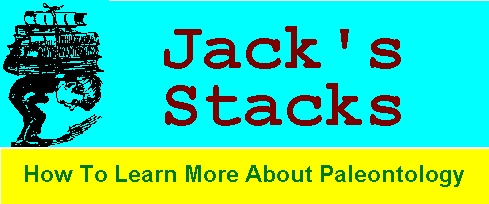
For History Buffs

This month I’ll review a book which should be of interest to anyone wanting to learn more about the history of paleontology. The work in question is Georges Cuvier, Fossil Bones, and Geological Catastrophes by Martin J. S. Rudwick. This book was published by the University of Chicago Press in 1997. The retail price is $34.95 in hardcover.
I have previously done a mini review on another of Rudwick’s books: The Meaning of Fossils: Episodes in the History of Palaeontology, Science History Publications,1976.
Georges Cuvier, Fossil Bones, and Geological Catastrophes is not a biography of Cuvier although the title might initially give you that impression. The subtitle New Translations & Interpretations of the Primary Texts is more descriptive of the book’s content. Rudwick has gone to the original writings of Cuvier including published works and original manuscripts. He has retranslated and reinterpreted these writings putting Cuvier in his proper historical context and correcting some long standing mis-interpretations of his motivation.
Cuvier (1769 - 1832) is most famous for bringing the field of comparative anatomy to the forefront in paleontological research. He is well known for a misrepresentation of his skills in this area: he is often attributed with being able to reconstruct an entire skeleton from only one bone. Actually, Rudwick points out that his talent was in identifying an animal from a small number of bones.
Yet another important premise attributed to Cuvier is that of extinction of species. Prior to him most of the educated elite believed in a single creation of all species. Most of this thinking was founded in the biblical creation story. Cuvier, using his skills in comparative anatomy, was able to show that the fossil bones being found around Paris and other places in Europe were from animals that no longer lived anywhere on the earth. The subsequent level of thinking remained biblical for many in that they recognized that these extinct animals had been done in by the Noachian flood.
Further studies by Cuvier and other early geologists of the time demonstrated that through the history of the earth many extinctions and subsequent creations (not in the biblical sense) of species occurred. Cuvier had two points of view on this in essence - in order to kill off an entire worldwide assemblage of species the mechanism must have been catastrophic - although he did not know how new species were created he did not support divine intervention nor transmutation (later to be called evolution). Georges Cuvier was not a man to make wild speculations on how things worked. He dealt in facts and was highly critical of those many educated men who kept producing one "Theory of the Earth" after another. Cuvier did not believe in wasting time speculating without facts to back up theories; he was quite content to leave questions unanswered for future scientists and future discoveries.
Cuvier had been represented as a supporter of the biblical creation story and the Noachian flood since he did not support transmutation of species and he did support catastrophism as cause for extinction. Both of these premises Rudwick shows to be false interpretations of Cuvier’s thinking. Actually, Cuvier felt that biblical stories, both Christian and non-Christian, were collections of ancient stories passed down through generations. He felt that all of these stories needed to be passed through a sieve to filter out the fable parts from the fact parts. Only in this way did he think we could determine the amount of scientific fact in such stories. Rudwick points out that Cuvier’s support of catastrophism was founded not in support of biblical accounts but in his belief that theorizing without supporting facts is counterproductive to the advancement of knowledge.
I found Georges Cuvier, Fossil Bones, and Geological Catastrophes to be interesting reading. Rudwick’s style is quite reader friendly. Each chapter is in two parts. In the first section Rudwick explains what the following translated text is about, placing it in historical context and giving his interpretations of its meaning. The second part is the translation itself. Don’t panic, this does not read like those instruction manuals you’ve read of literal translations from German or Japanese. The translations flow as if written yesterday. Rudwick includes many explanatory footnotes delineated by [ ] and original footnotes of Cuvier delineated by ( ). When a translated word could have many meanings Rudwick includes the original French word in italicized [ ].
Rudwick finishes with a concluding chapter wherein he summarizes his interpretations from the preceding chapters. Following this are sections on Further Reading, Bibliography of Cuvier’s Sources, and Bibliography of Works by Historians of Science. For you French buffs there is an Appendix: French texts of Previously Unpublished Manuscripts (did I mention this is not translated?).
I recommend that any of you interested in the historical aspect of our hobby will appreciate this book about one of the most famous scientists in this field.